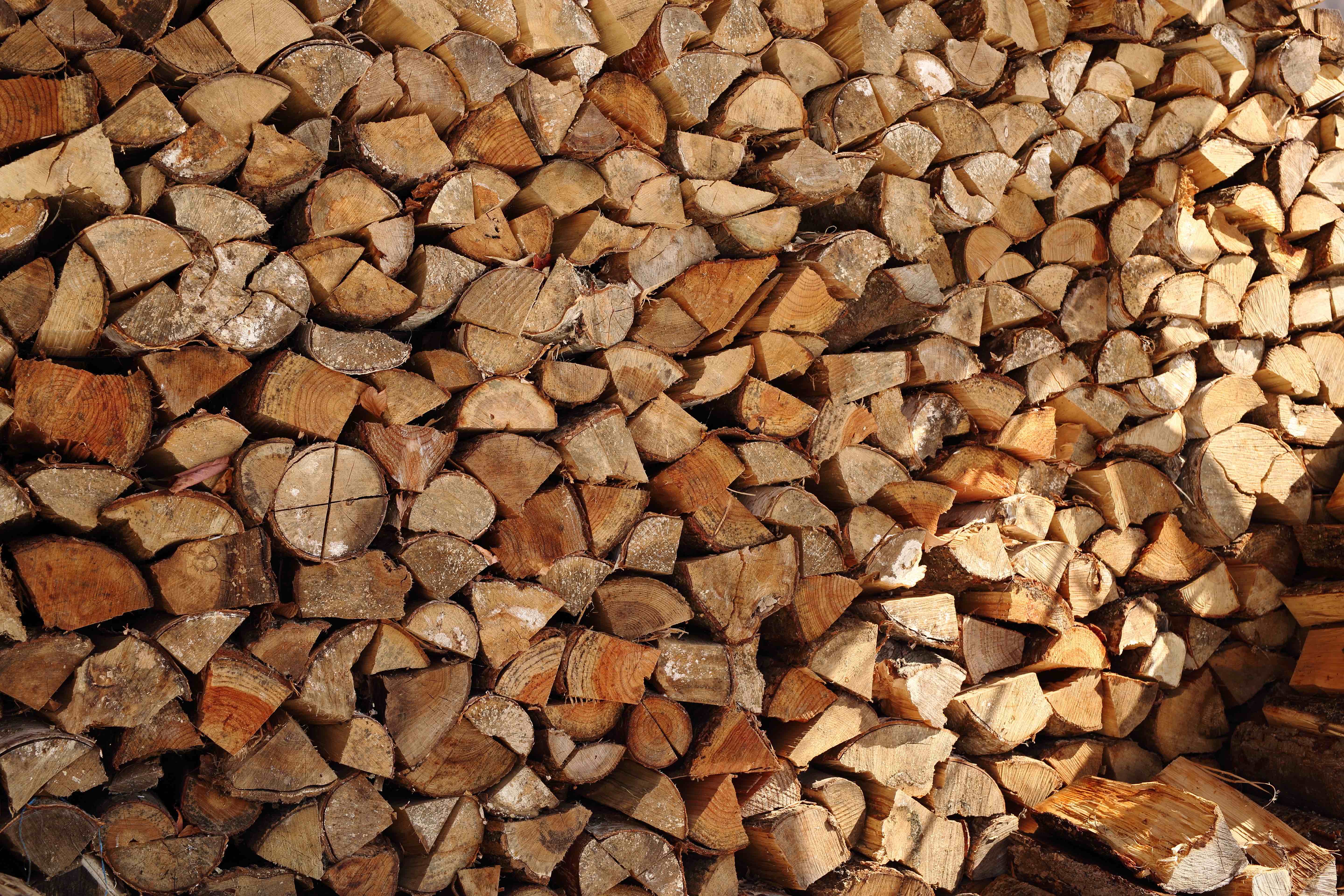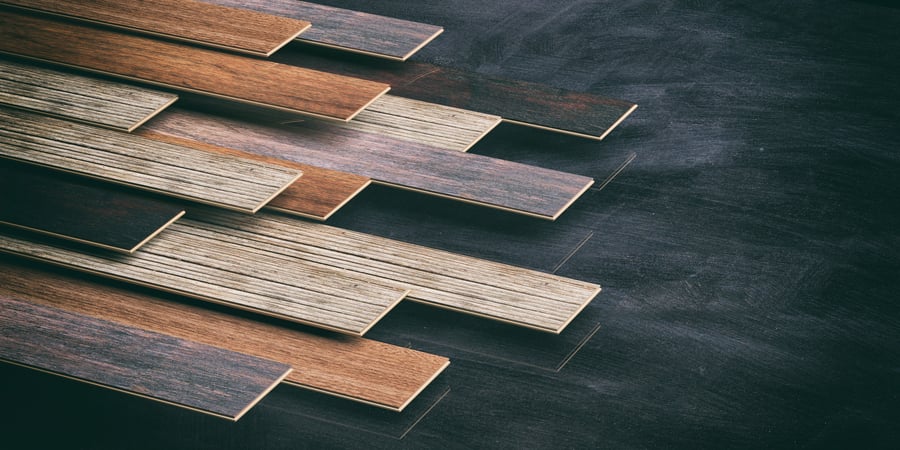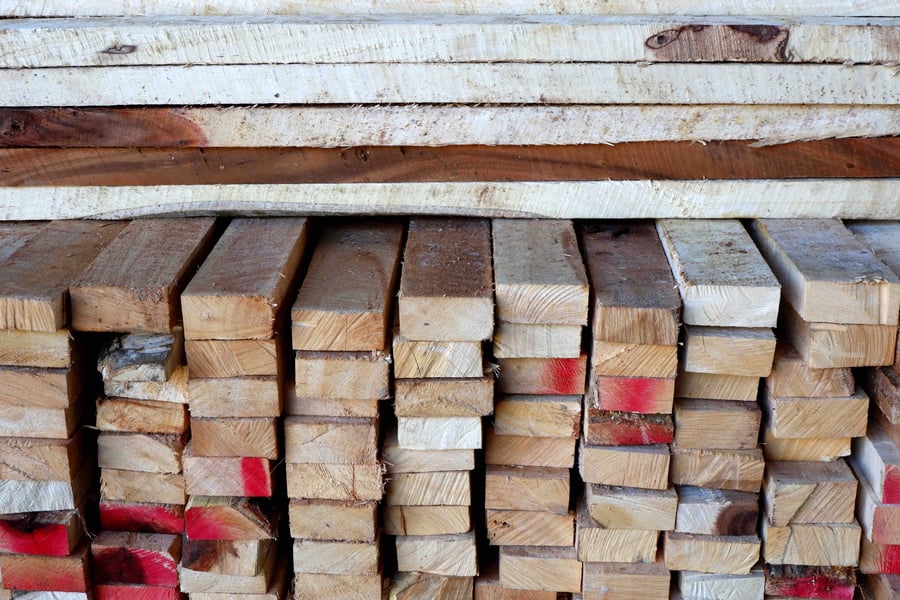Practical Uses For Moisture Meters For Quality Improvement in Wood Manufacturing RX # 3

Rx #3: MEASURING MC WHEN UNLOADING A KILN
Over the recent past decades, the processors and users of kiln dried (KD) lumber have become more and more conscious of the importance of achieving the correct final moisture content (MC). The users appreciate that incorrect MC does affect the quality of their product. Stated another way “Lumber at the correct MC is worth more money, often lots more, money.”
DETERMINE FINAL MC TAGETS
Softwoods. In the past, the softwood kiln operator may have been told that after drying, 95% of the pieces of lumber needs to be under 19% MC, or perhaps nothing over 15% MC and nothing under 9% MC. Today, specifications for softwoods are even tighter, especially for 1” boards, and, as a result, the quality is indeed improved.
Hardwoods. In the past, the hardwood kiln operator was often told that the final MC should be “6 to 8% MC.” Today, many hardwood operations are demanding an average of 6.8% to 7.2% MC with very few, if any, pieces of lumber over 8.0% MC. There is a definite trend to requiring tighter specifications for final MCs to achieve higher quality final products.
We must appreciate that no matter how good a kiln operator is and no matter how good the equipment is, there will be some variability in the final MC when kiln drying is complete. Plus, no two pieces of wood behave the same.
So, the key questions for every kiln operator and manager is ”What is the desired average final MC?” and “How much spread or variability around the average is acceptable?” For softwoods, it is the grading association that usually specifies the answer to this question; for hardwoods, the user of the lumber should specify, but usually does not. Here’s the problem: Without a precise answer, the kiln operator is “in the dark.”
Two follow-up questions for the kiln operator or manager: “Is the final MC of a specific load right on target?” If not, “What can the kiln operator do to improve the final MC values…to hit the target?
MEASURING FINAL MC
The kiln operator has perhaps 4 to 12 kiln samples in the kiln that were used to check the MC at the end of drying. However, there are perhaps 10,000 pieces of lumber in the kiln. How do we find out the MC of all 10,000 pieces? Unless we have an in-line moisture meter at the unstacker, we cannot measure every piece, so we must carefully sample and make a reliable estimate. To be most useful for improving the drying process in the future, these final MC measurements should be taken right when we unload the kiln. To help identify kiln equipment issues, in addition to the MC value, each reading should be related to the location of that piece of lumber in the kiln.
Sampling. As just stated, here is no way we can measure the MC of every piece of lumber when we unload the kiln. So, we must rely on statistical sampling to estimate the MC values in the entire kiln. For reliable estimates, we need about 30 MC, randomly taken, readings.
We do not want to use more than one piece of lumber that is exposed to the 4x4 spacing, as we know that the higher air flow will dry lumber in these locations drier than much of the rest of the load. We also want the 30 readings to come from at least 15 different locations, preferably 15 different packs. We want the locations to represent a cross section of the kiln- -that is, left side, right side, middle, edge packs, center packs, bottom packs and top packs and so on. Such randomness gives more confidence in the estimates.
Using a meter with a memory speeds up data collection. Make sure that no bogus readings (readings that are way out of line) are included in the data set. Make sure that temperature (of the lumber, not air temperature) and species corrections are made. Make sure that readings are taken with one decimal point; that is, 10.3% or 6.8% MC.
With the pin meter used on KD lumber that normally will not have significant moisture gradients, we obtain the average MC of a piece of lumber by using insulated, 1/2” needles (I like the shorter needles as they are not so prone to bending especially with dense species. However, with lumber that has a MC gradient, which is more common with softwood lumber as we do not equalize the final MC like we do with hardwoods, use the 1” needles.) The needles are driven into the edge of the lumber at a point about 1/4 of the lumber’s thickness from the top or bottom of a piece. This 1/4 depth procedure is used because we want the average MC and not just the core value. (We also drive the insulated needles 1/4 deep when measuring from the face.
When taking the MC readings, also note where the lumber was located in the kiln. In this way we can often find out that the top dries more slowly than the bottom, the back left corner is slow drying, and so on. Generally, we will make such conclusions after analyzing six loads of lumber and not just one or two.
I encourage the kiln operator to take the readings rather than relying on a forklift driver or other person. Yes, this does take time, but the information obtained is worth it, for sure.
When crawling around the lumber stacks, safety is certainly an issue- -be careful.
Calculations. First, all 30 readings are averaged (add all 30 and divide the sum by 30); use one decimal point, such as 7.1% MC. Any deviation between the actual average and the target average final MC should be noted and explained, with the idea that the next load can be better. Some meters have a button to push to get the average MC automatically and instantly- -a big time saver and no chance of calculation errors. (The voice of experience: “Remember to zero the memory before starting a new batch of measurements.”)
In addition, note any trends in final MC related to location. A drawing of the kiln with deviation of the actual MC at each location from the load’s average MC (written on the drawing) can give a good picture.
Some meters also can automatically calculate the Standard Deviation (SD), which is a measure of the variability of the final MC. Otherwise, the MC data will have to be entered into a calculator or computer to get the SD. An excellent hardwood kiln drying operation will have SD < 0.3; an average operation will have SD < 0.5. Softwood dimension operations will target SD < 1.5; softwood boards, 0.5 is excellent.
The average MC can be adjusted and the SD can be reduced by controlling the EMC in the kiln at or near the end of the kiln cycle and by adjusting the time for equalization. The more uniform the MC of the lumber when a kiln is loaded, the better the final MC uniformity.
When air drying or predrying prior to kiln drying, the MC uniformity in incoming lumber can often be improved. Some ideas are
Use longer air drying or predrying time
Rearrange packs after a few months so that the bottom packs of lumber are now on the top, and the top ones are on the bottom
Improve the rain drainage system in air drying
Spread the piles out in air drying
Use different predrying times for different species and thicknesses
Use plenum baffles in the predryer.
Overall, remember that the objective in measuring final MC is to improve drying quality and not to “point fingers.”
Rx is from The Wood Doctor, Gene Wengert, President, The Wood Doctor’s Rx LLC
Subscribe to Our Blog
Post Related

Practical Uses For Moisture Meters For Quality Improvement in Wood Manufacturing RX # 2


